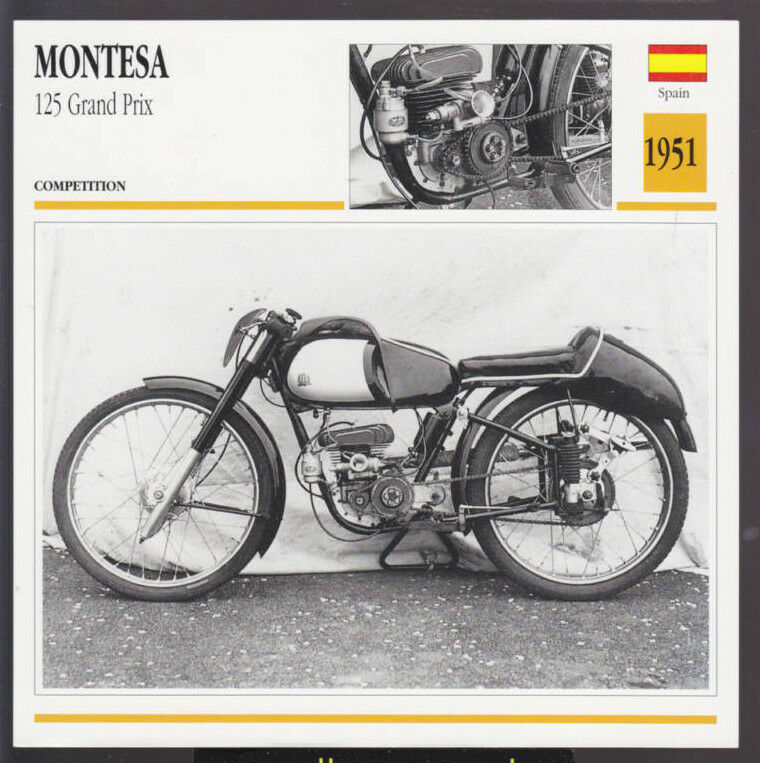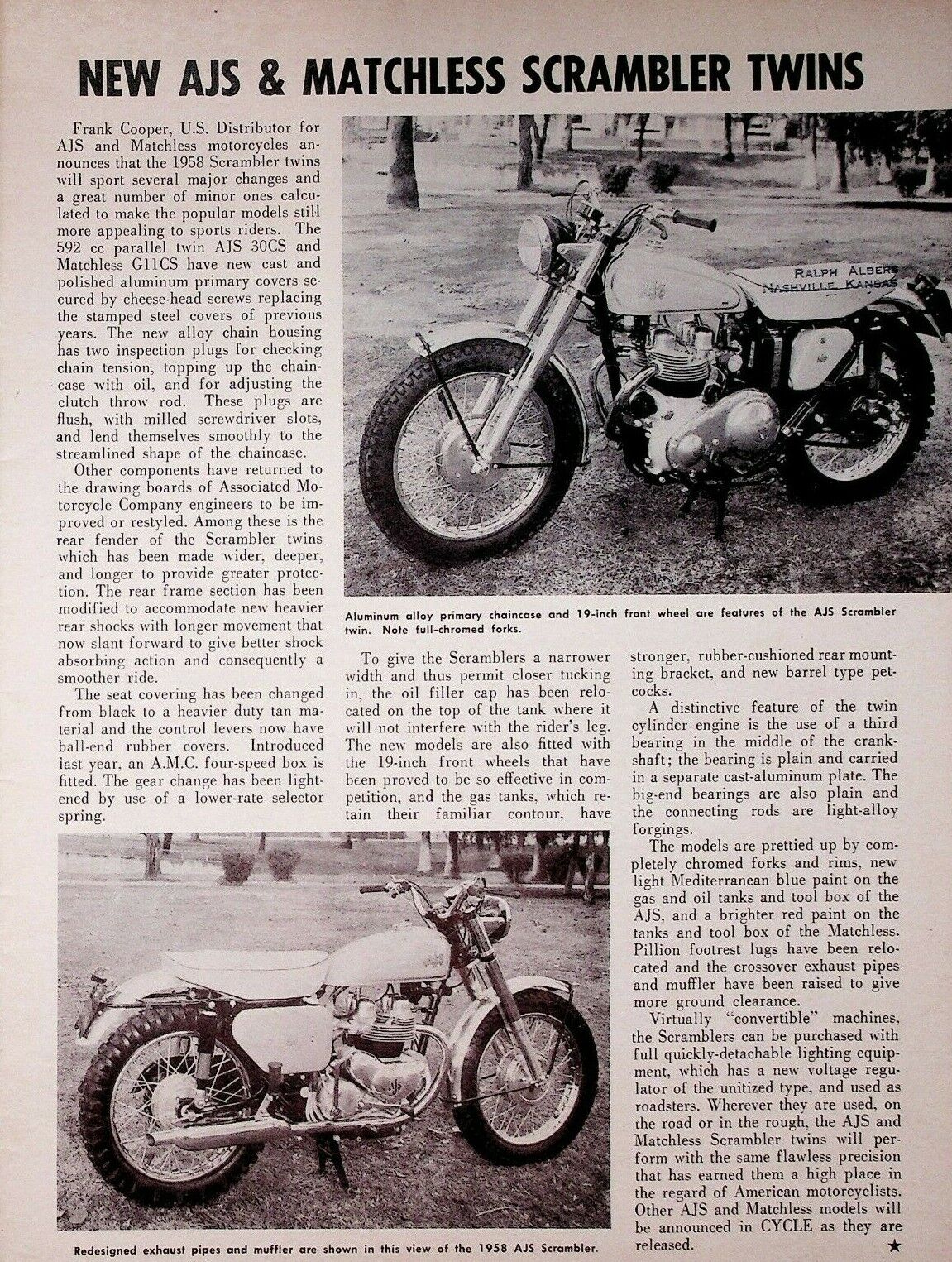-40%
1971 Montesa Cota 25 - 2-Page Vintage Motorcycle Article
$ 7.89
- Description
- Size Guide
Description
1971 Montesa Cota 25 - 2-Page Vintage Motorcycle ArticleOriginal, vintage motorcycle article
Page Size: Approx. 8" x 11" (21 cm x 28 cm) each page
Condition: Good
A Mini-Trialer
Designed For
Youngsters 5 To 9.
FROM A DISTANCE you have to
look twice. The proportions of
the Montesa Cota 25 are so like the
full-sized trialer on which it was mod-
eled that it fools the eye, turning rocks
into boulders and bushes into trees.
The bike is a mini-trialer, designed
specifically for serious junior-sized trials
riders 5 to 9 years old. We suppose Dad,
who is pulling the purse strings, could
steal it back from Junior for a blast
around the parking lot. But he would
soon return it. Everything on the ma-
chine is scaled for Junior’s comfort, not
Dad’s.
A 48.7-cc two-stroke Single, rated to
produce 1.6 bhp at 4500 rpm, powers
the Cota 25. Like the big 250-cc Cota
engine, the power curve is flat, to
provide good pulling power at minimal
engine speed.
The gearbox is not what we would
call sophisticated. It has only two
speeds, which is really all it needs in
most observed trials situations, consider-
ing the small size and weight of bike and
rider combined.
The problem is that it does not
provide the conventional means of shift-
ing gears by tapping a gear lever with
the foot while declutching with a left-
hand lever. Instead, the clutch is of the
automatic, centrifugal type: turn the
throttle grip, and the engine accelerates,
spinning a set of flyweights outward to
engage a friction drum, which transmits
power to the back wheel through a
chain.
The function of the automatic clutch
is excellent, as it engages smoothly. In
neophyte hands, it may be preferable to
a hand clutch, as it is nearly impossible
to kill the engine if the bike is being run
through an extremely slow section.
But the rider cannot shift gears
easily, as he must take his left hand
from the handlebars in order to operate
a spring clip located on the top of the
transmission case. There are three
notched positions: a rearward “low”
gear, with a top speed of about 9 mph;
neutral in the middle; and “high” gear,
good for 20 mph, in the forward posi-
tion. These gears may be engaged while
the bike is in motion, but obviously the
system is not convenient. So the rider
must carefully plan his sections in ad-
vance to decide which gear he’ll use.
Fortunately, it will be low gear in
most cases, as there are few situations in
this class of trials riding where speeds of
more than 10 mph would be necessary
or desirable. The one notable exception
would be a long, loose-surfaced steepen-
ing climb, which demands a high speed
approach, and a deft, quick shot to a
lower gear if the bike begins to bog
down.
12041-7110-08









